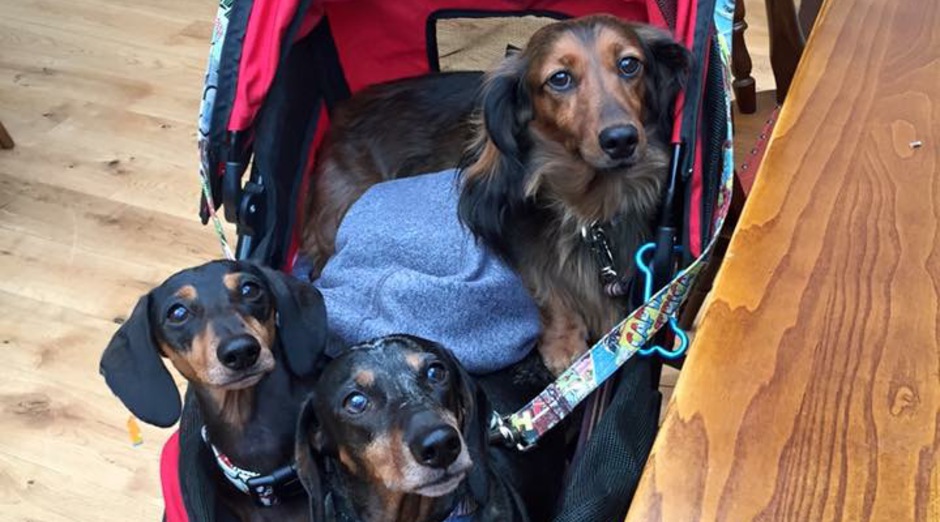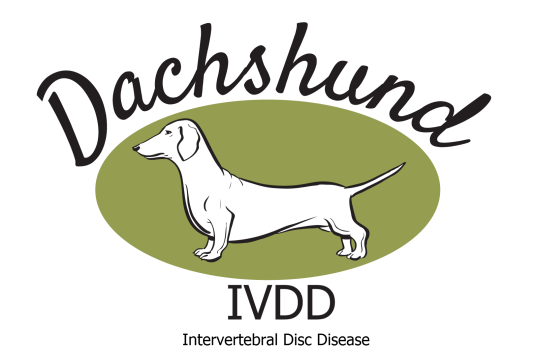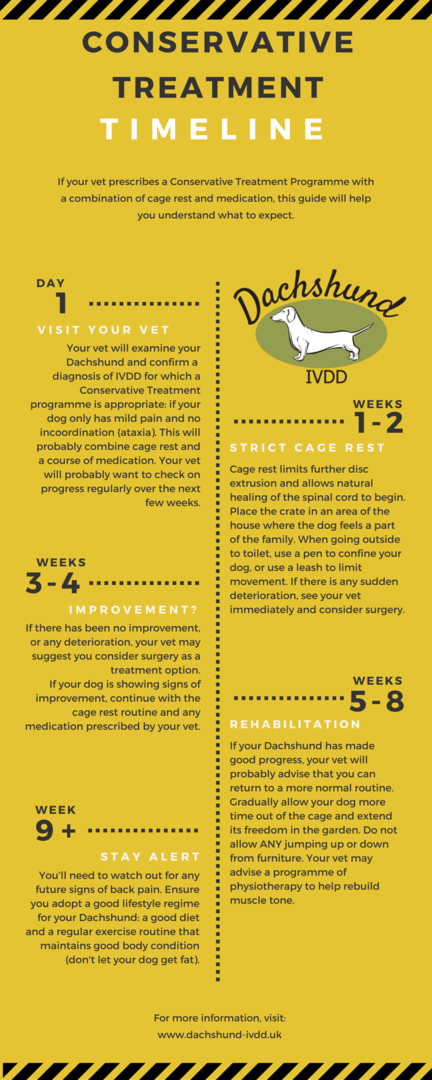
Conservative Treatment
Cage rest (typically over 6-8 weeks) combined with anti-inflammatory medication and painkillers are the main conservative treatment approaches likely to be recommended by your vet, where surgery is not felt to be necessary.
Cage rest may be appropriate if your dog only has mild pain and no incoordination (ataxia). It limits further disc extrusion and allows natural healing of the spinal cord to begin. Your vet will probably want to check on progress regularly and, if your dog has improved after 4 weeks, it can gradually return to a more normal routine over the next 1 to 4 weeks. If your dog has shown no signs of improvement from cage rest/medication after 4 weeks, you may then need to consider surgical treatment. Any deterioration at any stage of conservative treatment is likely to lead to a recommendation of surgery.
You can download an advice sheet from Cambridge Vet School here.
Read Crate advice for Dachshunds with IVDD and Crate rest for dogs: advice for vets from Dr Marianne Dorn. These are excellent summaries for owners to read about the challenges and practicalities of cage rest.
Your vet may also prescribe anti-inflammatory and painkiller drugs:
- Non-steroidal anti-inflammatories (NSAIDs) such as Previcox
- Opioids
- Gabapentin (e.g. Neurontin)
The use of any form of steroids is not currently recommended in the UK, either as part of conservative management or prior to surgery.
Always discuss medications with your vet, including benefits, risks, side effects, and any required laboratory monitoring.
Conservative treatment is comparatively inexpensive compared to surgical options. Nearly all dogs improve, but around 1 in 3 will have further disc extrusion in the future and will then need more treatment. Adapting your dog's lifestyle (exercise and diet) after an IVDD incident may help reduce the risks of a recurrence.
Your vet should also recommend a rehabilitation plan for your dog once the period of conservative treatment has ended.
Tips for cage rest:
- At the first sign of a back problem and during recovery, confine your dog using a small crate (as wide as the dog's length and 1.5 times the length of the dog's body)
- Place the crate in an area of the house where the dog feels a part of the family
- Use a piece of vet bed or a folded blanket, not a bean bag, for the dog to lie on
- When going outside to allow your dog a toilet break, place a small wire crate on the ground with the bottom removed. You can also use an exercise pen folded up to 3’ x 3’ or be sure the dog is taken out on a leash
- STRICT cage rest is one of the most important aspects of conservative treatment so it will be much easier if you have crate-trained your dog right from a puppy - that way it will not be a stressful thing to be confined
- If your dog shows any signs of deterioration during its weeks of cage rest, you must see your vet immediately (your vet may want to see your dog regularly, anyway)
Below, you will find a general guide to what happens during conservative treatment. Your vet's advice may differ from this, so please follow specific advice tailored to your dog's needs.


